Bethlehem is significant to Christians because it is considered the birthplace of Jesus of Nazareth according to the Gospels. Bethlehem has the oldest Christian community - it is home to the largest Palestinian Christian communities in the Middle East, but unfortunately the community has been dwindling in recent years, the Christians in Bethlehem have emigrated, mostly to the United States.
Bethlehem is inhabited by one of the oldest Christian communities, which has been diminishing in recent years because of accelerated emigration, mostly to the United States. Bethlehem includes the townships of Beit Jala and Beit Sahour, the latter also having Biblical significance. The traditional site of Rachel's tomb, which is an important holy site in Judaism, lies at Bethlehem's outskirts.
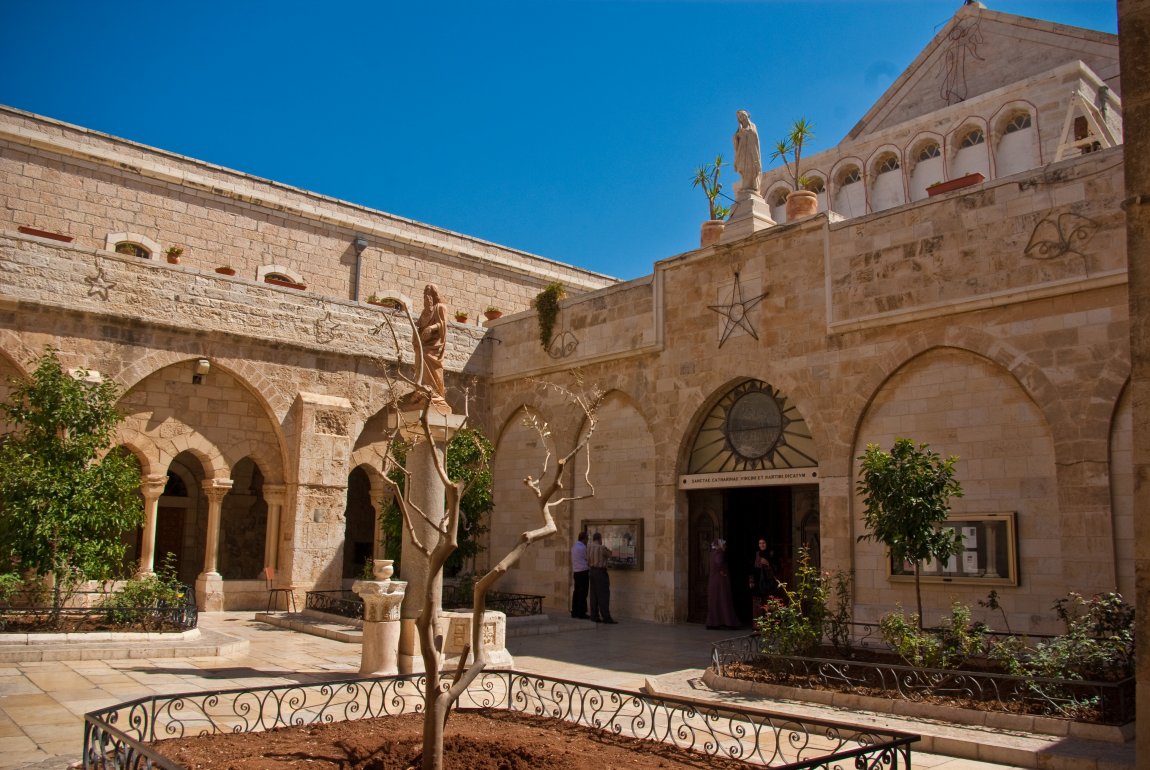
Church of St Catherine and the Basilica of the Nativity, Bethlehem
Source: https://commons.wikimedia.org/wiki/File:Church_of_Saint_Catherine_of_Alexandria_at_the_Basilica_of_the_Nativity.jpg
Author: Antoine Taveneaux

Bethlehem is located about 10 kilometers (6 miles) south of Jerusalem. It stands at an elevation of about 775m (2,510 ft) above sea level, thus 30 meters (100 feet) higher than Jerusalem. The temperature in Bethlehem is cold from November to March, with the coldest month being January, when temperature drops to between 1 to 13° Celsius. Summers are from June to September. The warmest month is August, when temperature hovers between 17 and 27°C.
Bethlehem is located in the "hill country" of Judah. It appeared originally as Ephrath in Genesis 35:16, 19; 48:7 and Ruth 4:11. It was also called Beth-lehem Ephratah in Micah 5:2, Beth-lehem-judah in 1 Samuel 17:12, and "the city of David" in Luke 2:4.
Bethlehem was first noticed in Scripture as the place associated with Rachel's death and burial "by the wayside" (Gen. 48:7). Rachel's tomb is located at the roadside near Bethlehem. The valley to the east was the scene of the story of Ruth the Moabitess. There are the fields in which she gleaned, and the path by which she and Naomi returned to the town.
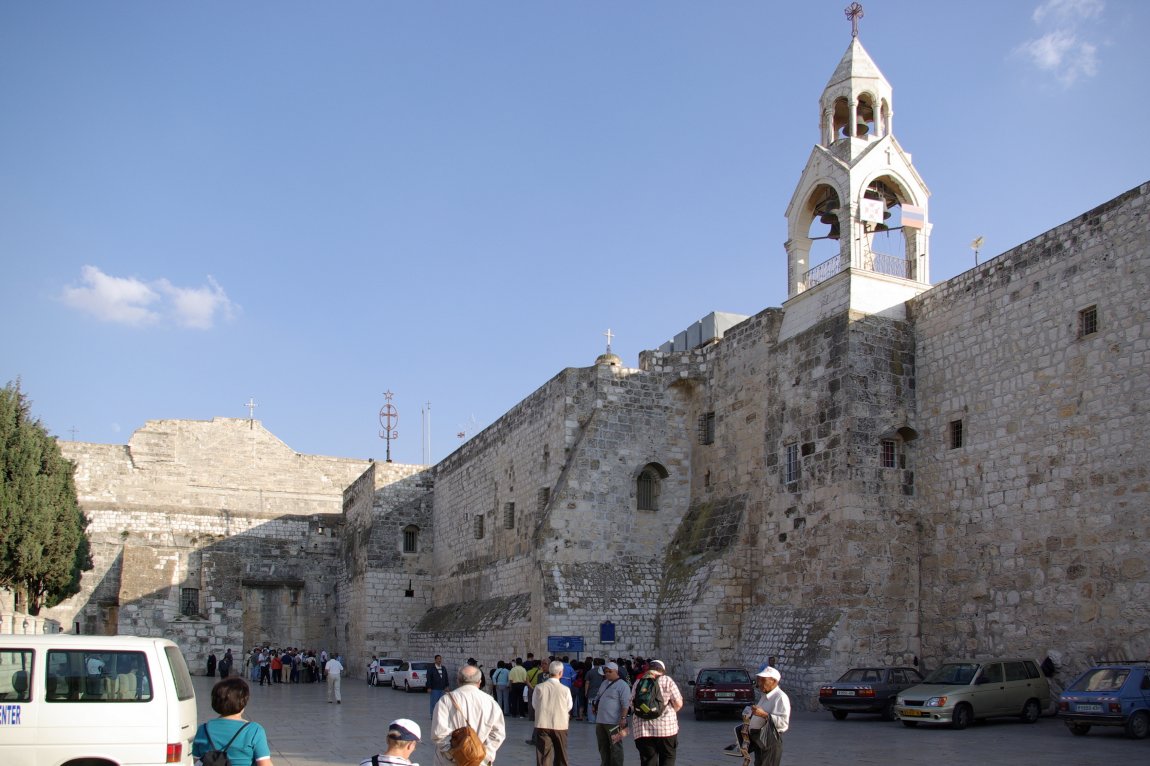
Church of the Nativity, Bethlehem
Source: https://commons.wikimedia.org/wiki/File:Bethlehem_BW_1.JPG
Author: Berthold Werner

Bethlehem is believed to be the birth-place of King David, the second king of Israel. It is also believed to be the place where David was anointed as king by Samuel (1 Samuel 16:4-13). It was from the well of Bethlehem that three of David's heroes brought water for him at the risk of their lives when he was in the cave of Adullam (2 Samuel 23:13-17).
In Micah 5:2 is found the prophesy that the Messiah would be born in Bethlehem. The Gospel of Luke (Luke 2:4) reports that Jesus' parents are forced to leave Nazareth, their place of residence, and return to Bethlehem for a census, where Jesus is born, before they return to Nazareth, where Jesus grows up.
On the other hand, the Gospel of Matthew (Matthew 2:1) seems to report that the family lived in Bethlehem first, and later moved to Nazareth. Matthew reports that Herod the Great had "all the children that were in Bethlehem, and in all the coasts thereof, from two years old and under" killed shortly after Jesus' birth (Matthew 2:16, 18 fulfilling the prophesy of Jeremiah. 31:15).
In the gospel Jesus' earthly father Joseph is warned of this in a dream, and the family escapes this fate by fleeing to Egypt, returning only after Herod the Great has died. But being warned in another dream not to return to Judea, Joseph withdraws the family to Galilee, and goes to dwell in Nazareth as mentioned in Matthew. 2:22-23.
Bethlehem was wrecked during the Bar Kokhba's revolt of 132-135AD. The Romans set up a shrine to Adonis on the site of the Nativity. The first Christian church in Bethlehem was constructed in 326AD when Helena, the mother of the first Christian emperor, Constantine, visited Bethlehem. This is called the Church of the Nativity.
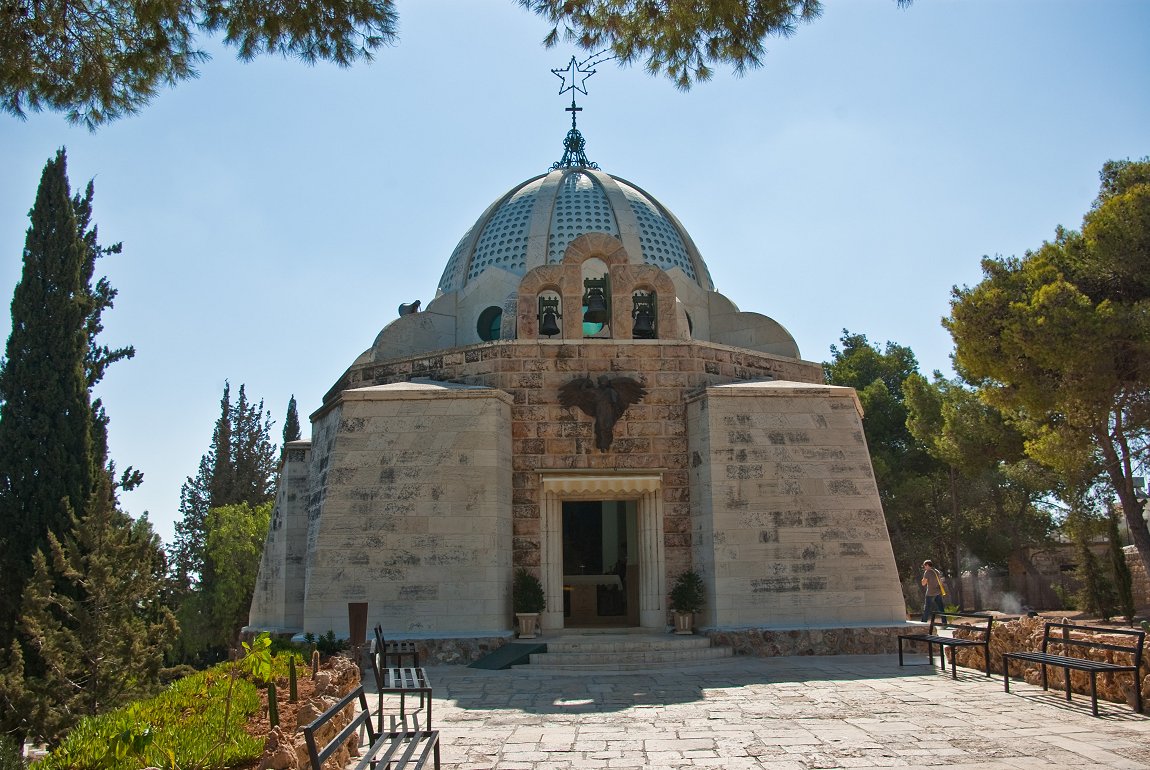
Franciscan chapel at the Roman Catholic Shepherd's Field, Bethlehem
Source: https://commons.wikimedia.org/wiki/File:Christmas_Church_%28Bethlehem%293.jpg
Author: Antoine Taveneaux

The Samaritan revolt of 529 AD caused Bethlehem to be ransacked and its walls and the Church of the Nativity destroyed. They were soon rebuilt on the orders of the Emperor Justinian I. In 614, the Persians invaded Palestine and captured Bethlehem. According to a story, the Persians refrained from destroying the Church of the Nativity after seeing on the mosaics that the magi were depicted in Persian clothing. In 637, shortly after Jerusalem was captured by the Muslim armies, their leader the Caliph Umar ibn al-Khattab visited Bethlehem and promised that the Church of the Nativity would be preserved for Christian use.
In 1099, Bethlehem was captured by the Crusaders, who fortified it and built a new monastery and cloister on the north side of the Church of the Nativity. The Greek Orthodox were removed from their Sees and replaced with Latin clerics. Up until that point the Official Christian presence in the Holy Land was Greek Orthodox. The town prospered under their rule. On Christmas Day 1100 Baldwin I, first king of the Frankish Kingdom of Jerusalem, was crowned in Bethlehem, and that year a Latin episcopate was also established in the town.
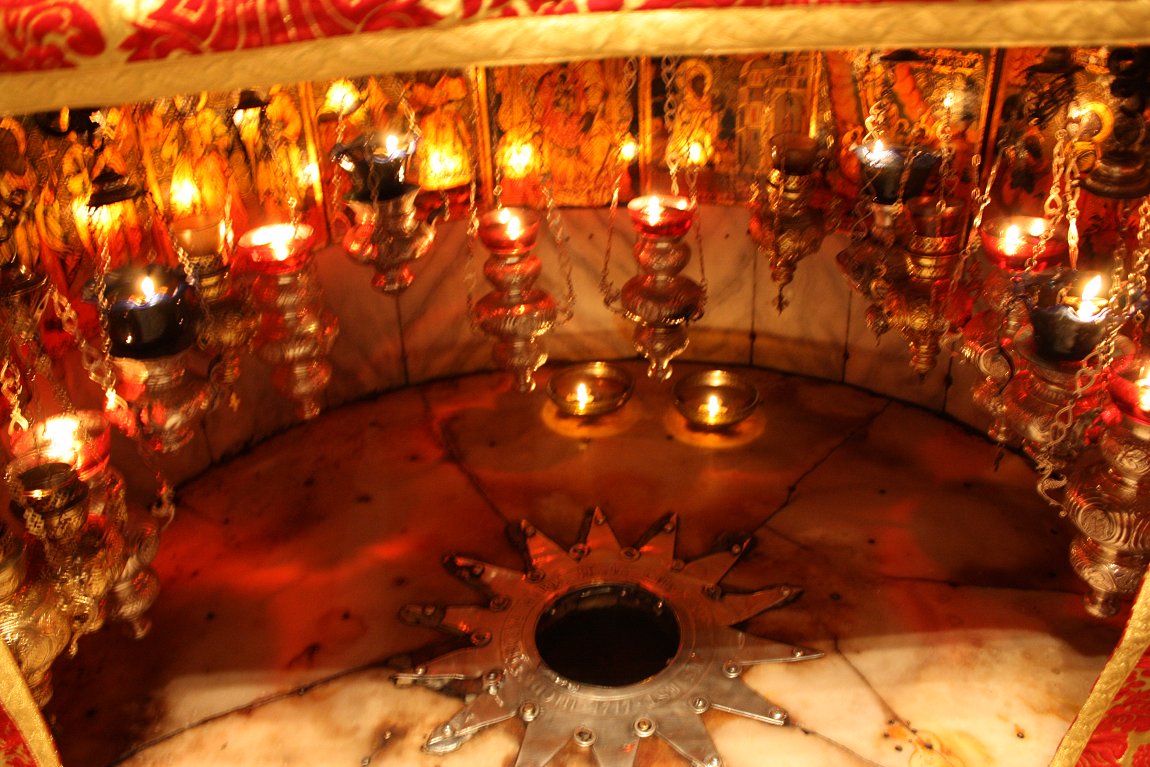
Star marking birthplace of Jesus Christ, Grotto of the Nativity, Bethlehem
Source: https://commons.wikimedia.org/wiki/File:Birthplace_in_the_Grotto_of_the_Nativity_2010_2.jpg
Author: Wknight94

In the 1160s the nave of the Church of the Nativity was redecorated with mosaics showing the councils of the church. An ally of King Amalric I of Jerusalem, emperor Manuel I Comnenus of Byzantium, was one of the patrons of the work. On the south wall, an inscription in Greek reads: "the present work was finished by Ephraim the monk, painter and mosaicist, in the reign of the great emperor Manuel Porphyrogenitos Comnenus and in the time of the great king of Jerusalem, Amalric." Interestingly, the emperor's name was placed first, in recognition of his role as overlord and protector of the Crusaders at the time.
However, in 1187, Muslims under Saladin captured Bethlehem from the Crusaders, and the Latin clerics were forced to leave and the Greek Orthodox clergy were allowed to return. Saladin agreed to the return of two Latin priests and two deacons in 1192. However, the town suffered from the loss of the pilgrim trade. Bethlehem was briefly returned to Crusader control by treaty between 1229 and 1244. In 1250, with the coming to power of Rukn al-Din Baibars, tolerance of Christianity declined, clergy left the town, and in 1263 the walls of the town were demolished. The Latin clergy returned to the town over the following century, establishing themselves in the monastery adjoining the Basilica. The Greek Orthodox were given control of the basilica and shared control of the Grotto with the Latins and the Armenians.
From 1517, Bethlehem was ruled by the Ottoman empire. Custody of the Basilica was bitterly disputed between the Catholic and Greek Orthodox churches. From 1831 to 1841, Palestine was under the rule of Muhammad Ali of Egypt. During this period it suffered an earthquake as well as the destruction of the Muslim quarter by troops apparently as a reprisal for murder and rape. In 1841, Bethlehem came under Ottoman rule once again, and so it remained under Ottoman rule until the end of the First World War and the imposition of the British Mandate of Palestine.
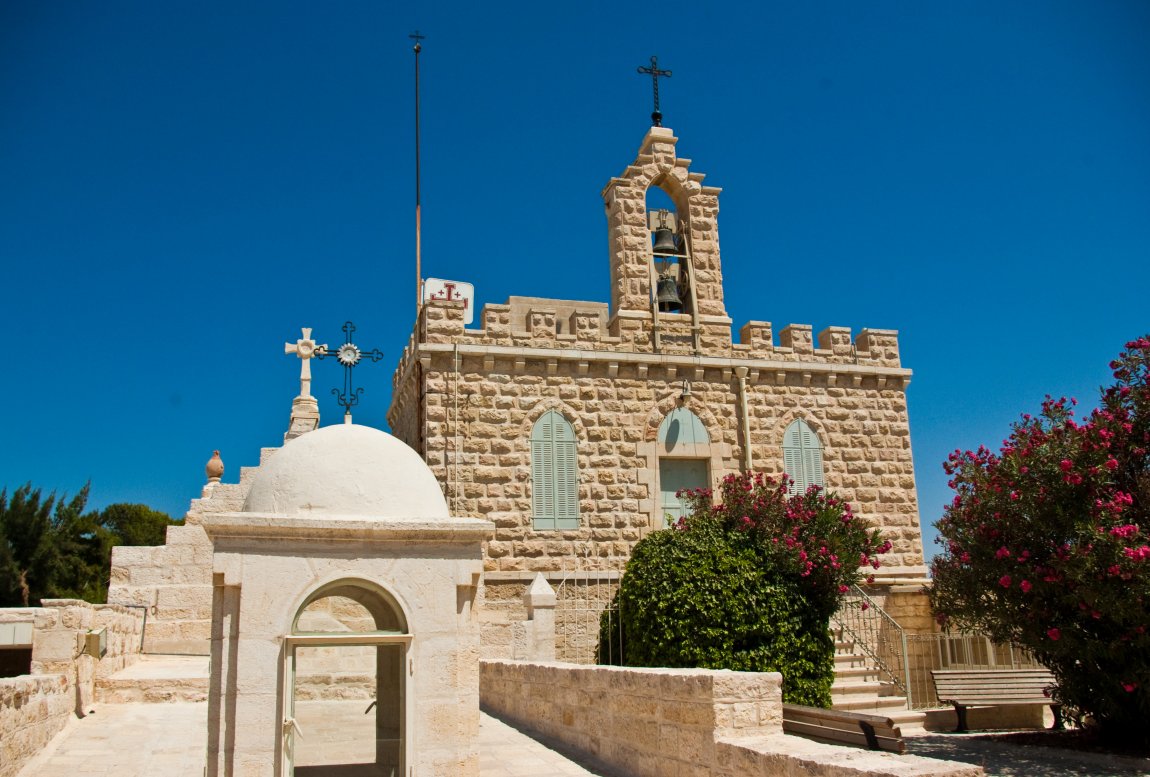
A church in Bethlehem
Source: https://commons.wikimedia.org/wiki/File:A_Churches_in_Bethlehem2.jpg
Author: Antoine Taveneaux

In the United Nations General Assembly's 1947 resolution to partition Palestine, Bethlehem was included in the special international enclave of Jerusalem to be administered by the United Nations. Jordan occupied the city during the 1948 Arab-Israeli War. Many refugees from areas captured by Israeli forces in 1947 - 1948 came to Bethlehem, setting up encampments in the north of the city near the road to Jerusalem and on the hillside to the south between the city and Solomon's Pools. These later became the official refugee camps of Beit Jibrin (or al-'Azza) and 'Aida (in the north) and Deheisheh in the south. This influx of refugees changed the demography of Bethlehem considerably, changing the Christian majority into a minority.
Jordan retained control of the city until the 1967 Six-Day War, when Bethlehem was captured by Israel along with the rest of the West Bank.
On December 21, 1995, Bethlehem became one of the areas under the full control of the Palestinian National Authority in conformance with the Oslo Accords. It is capital of the Bethlehem Governorate. The current population of the town is about 40,000. The Christian population is a decreasing minority, 12% in 2006, but a special statute requires that the mayor and a majority of the municipal council must nevertheless be Christian. The mayor is currently Victor Batarseh.
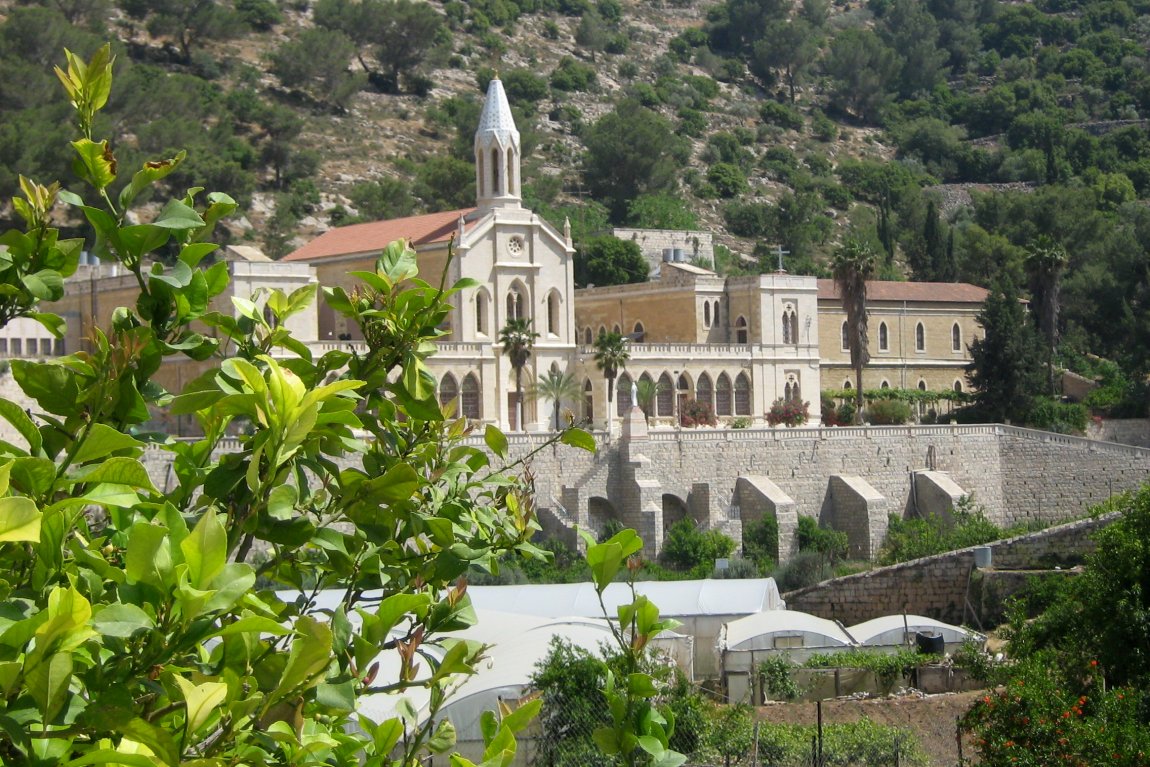
Convent of the Hortus Conclusus, Artas Valley, Palestine
Source: https://commons.wikimedia.org/wiki/File:The_Convent_of_the_Hortus_Conclusus_or_Sealed_Garden,_Artas_West_Bank,_Palestine.jpg
Author: Artas Folklore Center

Most entrances into and exits from the Bethlehem agglomeration to the rest of the West Bank are currently subject to Israeli checkpoints and roadblocks, with the level of access varying based on Israeli security directives.
Visiting Bethlehem
Travel into and out Bethlehem is strictly controled. Movement of Bethlehem's Palestinian residents is regulated by a permit-system. Such permits have become increasingly hard to get since the al-Aqsa Intifada brewed up in violence.Since the Intifada's onset, Bethlehem was periodically placed under strict curfews which prevent residents from leaving their homes. Palestinians are not allowed to enter the Jewish holy site of Rachel's Tomb, which is on the outskirts of the city, without a permit. Israeli citizens cannot go there without a permit from the Israeli military authorities either.
The construction of the West Bank barrier wall by Israel has had another severely negative impact on Bethlehem. The barrier runs along the northern side of the town's built-up area, within metres of houses in 'A'ida refugee camp on the one side, and the Jerusalem municipality on the other.
Places of Interest in Bethlehem
- Church of the Nativity
- Church of St Catherine
- Grotto of the Nativity
- Herodium
- Rachel's Tomb
- Milk Grotto Chapel
- Monastery of St George
- Mosque of Omar
- Old City of Bethlehem
- Shepherd's Fields
- Solomon's Pool
 Latest updates on Penang Travel Tips
Latest updates on Penang Travel Tips
 Discover with Timothy YouTube Channel
Discover with Timothy YouTube Channel
 PG Food Channel
PG Food Channel
 Learn Penang Hokkien YouTube Channel
Learn Penang Hokkien YouTube Channel
 SojiMart Videos
SojiMart Videos
 Share your travels and/or ask a travel-related question
Share your travels and/or ask a travel-related question
Join the Penang Travel Tips Facebook Group to share photos, tips and anything related to your travels, or ask travel-related questions.
 Map of Roads in Penang
Map of Roads in Penang
Looking for information on Penang? Use this Map of Roads in Penang to zoom in on information about Penang, brought to you road by road. Discover with Timothy
Discover with Timothy
Let me take you to explore and discover Penang through my series of walking tours on YouTube. You may use these videos as your virtual tour guide. At the beginning of each video, I provide the starting point coordinates which you may key into your GPS, Google Maps or Waze, to be navigated to where I start the walk, and use the video as your virtual tour guide.Disclaimer
Please use the information on this page as guidance only. The author endeavours to update the information on this page from time to time, but regrets any inaccuracies if there be any.Latest from Discover with Timothy: Gurney Bay - what to see and do there
About this website

Hello and thanks for reading this page. My name is Timothy and my hobby is in describing places so that I can share the information with the general public. My website has become the go to site for a lot of people including students, teachers, journalists, etc. whenever they seek information on places, particularly those in Malaysia and Singapore. I have been doing this since 5 January 2003, for over twenty years already. You can read about me at Discover Timothy. By now I have compiled information on thousands of places, mostly in Peninsular Malaysia and Singapore, and I continue to add more almost every day. My goal is to describe every street in every town in Malaysia and Singapore.
Robbie's Roadmap
- Episode 1: Robbie's Journey to Financial Freedom
- Episode 2: Lost in America
- Episode 3: The Value of Money
- Episode 4: The Mentor
- Episode 5: The Thing that Makes Money
- Episode 6: The walk with a Billionaire
- Episode 7: The Financial Freedom Awakening
- Episode 8: Meet Mr Washington
- Episode 9: The Pizzeria Incident
Copyright © 2003-2024 Timothy Tye. All Rights Reserved.


 Go Back
Go Back